High moisture readings are an indication of several possible things that could be wrong. Take this first photo for example, this is a bedroom wall opposing a shower.
Firstly there could simply be an issue with the shower tap body not being adequately sealed to the wall sheeting or brickwork, or from leaking plumbing. This allows for moisture to enter the cavity. However the tap body area was dry when tested.
The tiled floor of the bathroom, outside the shower alcove had a very high reading, suggesting that moisture is present under the tiled floors and the timber floor in the adjoining bedroom also had a extremely high reading.
The flooring in the shower recess was showing signs of grout wear, as the grout had washed away from the tile edges and was exposing the tile spacers. This means that the grout is no longer waterproof and is allowing the moisture to pass through the grout. Tile adhesive and floor screed are not waterproof, so once moisture is present under a floor tile, it can freely move everywhere and be absorbed into concrete flooring , brickwork and timber frames.
Due to the age of the house, it is safe to assume that either the water proofing had failed, or it was poorly applied. Either way the only way to rectify a bathroom with issues like this is a full bathroom renovation.
Wood rot can be seen on the door frame and I could push my finger into the damp wood, resulting in a dent 5mm deep. The timber was so wet, I can only assume that the timber wall frame behind the door frame must be saturated.
Wet timber is attractive to termites, as well as being an issue with mycotoxins (black mold). I recommended if the purchasers really wanted this house to have an invasive inspection done, as my Termatrac unit had picked up movement inside the wall cavity. Invasive inspections are performed with the home owners permission, where access is gained by drilling into the house walls or floor and using a borescope. This is often done after the initial inspection, once an issue had been raised with the selling agent and home owner.
The borescope image provided by the invasive inspection, clearly showed mud tracking on timberwork under the bedroom area, caused by termite activity.
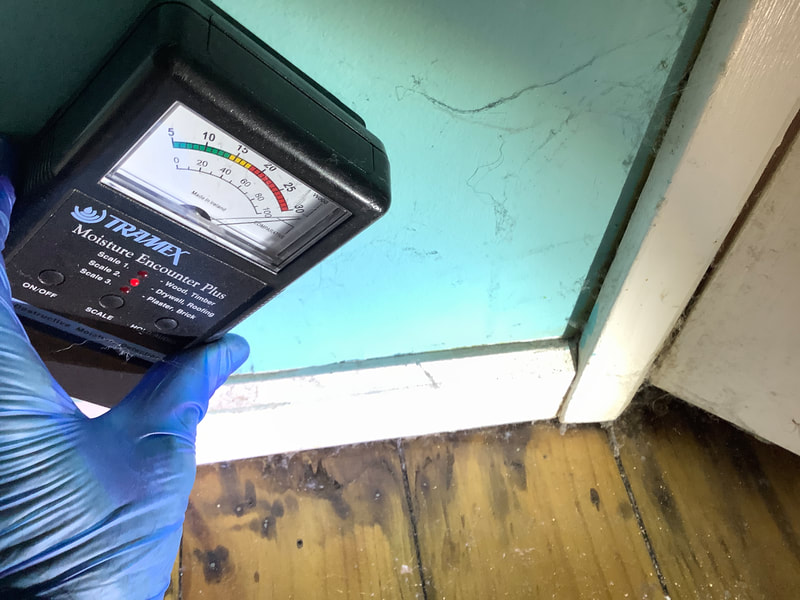
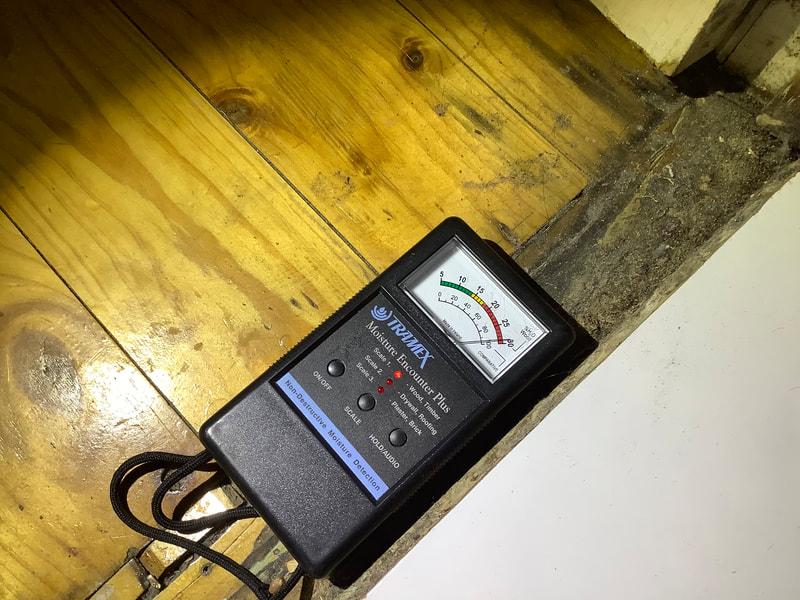
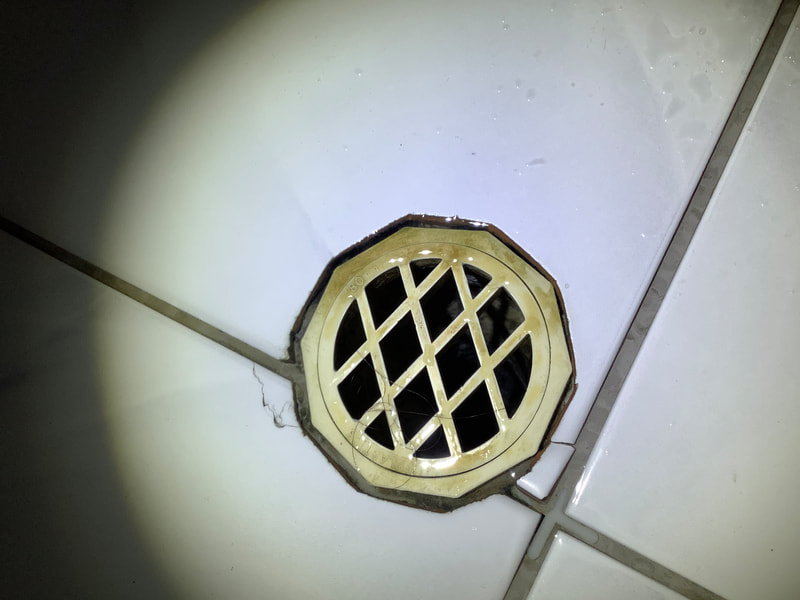
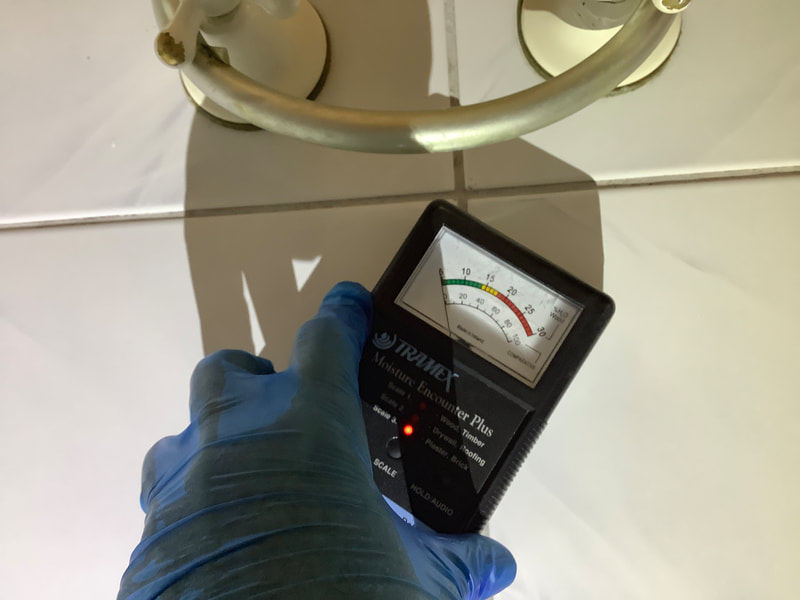
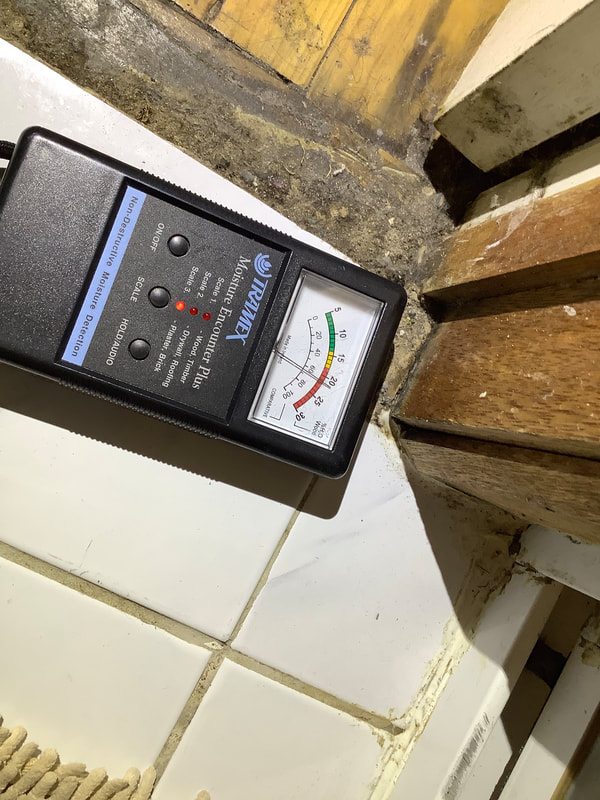
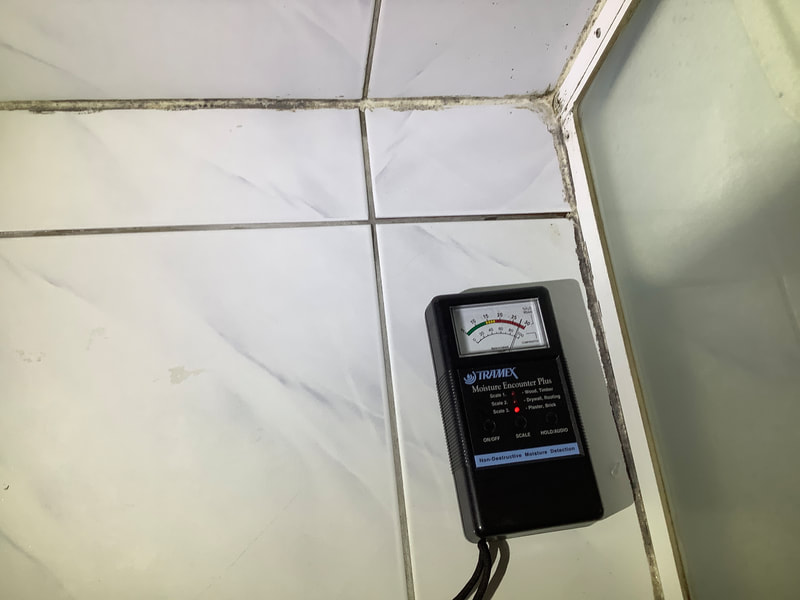
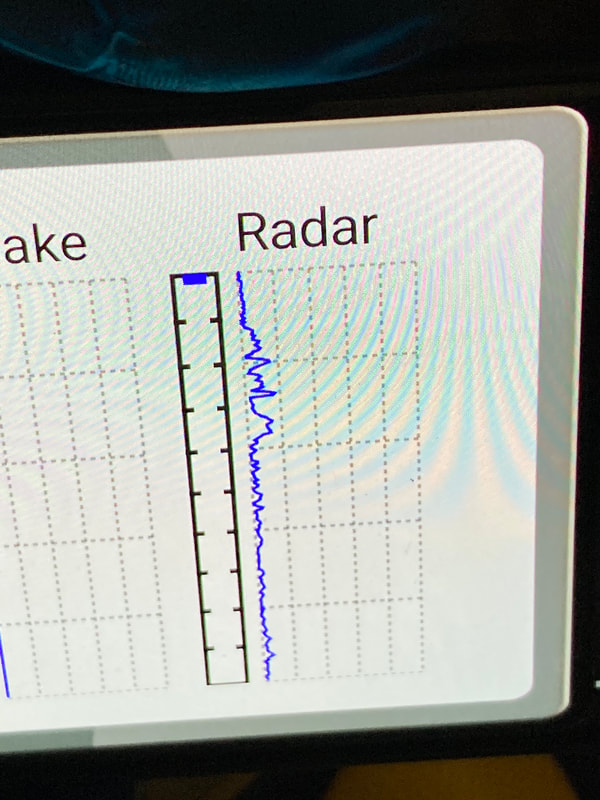
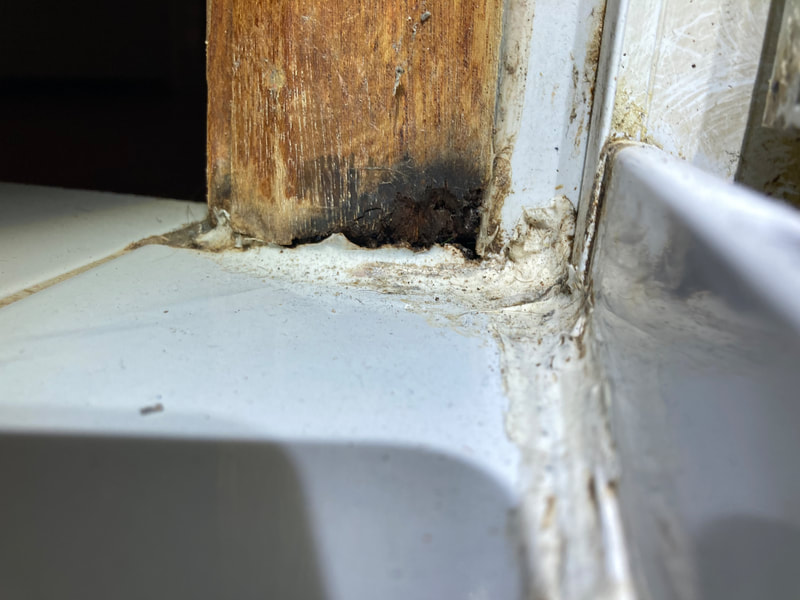
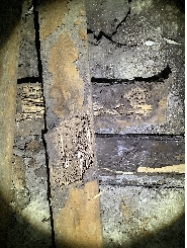
 RSS Feed
RSS Feed